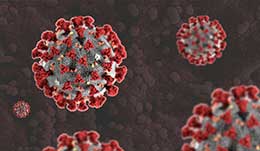Monkeypox Causes Symptoms Treatment and Prevention
The monkeypox virus causes an illness similar to smallpox. In 1958, a pox-like disease was detected......
Read More
Eye flu, also known as conjunctivitis, is a highly contagious and common eye infection that can cause discomfort and irritation. This blog delves into the world of eye flu, shedding light on its symptoms, underlying causes, and simple remedies that can help you find relief and restore your ocular comfort.
Eye flu, or conjunctivitis, is an inflammation of the thin, transparent layer of tissue (conjunctiva) that covers the white part of your eye and lines the inside of your eyelids. Various factors, including viruses, bacteria, allergens, and irritants, can cause this condition.
Recognizing the symptoms of eye flu is crucial for prompt diagnosis and treatment. The most common signs include redness in the white part of the eye, excessive tearing, itching or burning sensation, and a discharge that may be watery, sticky, or crusty. If you experience these symptoms, taking immediate steps to prevent their spread is essential.
Several factors can trigger eye flu, depending on its type. Viral conjunctivitis, often associated with colds or flu, is highly contagious and can spread through direct or indirect contact with the infected person's eye secretions. Bacteria cause bacterial conjunctivitis, resulting from poor hygiene or touching your eyes with unclean hands. Allergic conjunctivitis stems from allergens like pollen or pet dander, while irritant conjunctivitis arises from exposure to smoke, pollution, or chemicals.
Fortunately, mild cases of eye flu can often be managed with simple remedies that provide relief from discomfort. Begin by washing your hands frequently to prevent the spread of infection. Applying a warm, damp cloth to your closed eyes can help alleviate crustiness and soothe irritation. Over-the-counter lubricating eye drops can also provide relief from dryness and discomfort. Ensure you avoid sharing towels, makeup, or contact lenses during this time to prevent transmission.
While home remedies can offer relief, it's essential to recognize when a visit to an eye specialist is necessary. If you experience severe pain, increased redness, vision changes, or notice a thick yellow or green discharge, it's time to consult a healthcare professional. They can determine the underlying cause of your eye flu and recommend appropriate treatments, including prescription eye drops or antibiotics if bacterial infection is present.
Eye flu, or conjunctivitis, may disrupt your daily routine, but armed with knowledge about its symptoms, causes, and simple remedies, you can take swift action to find relief and prevent its spread. By practpracticing hygiene, taking preventive measures, and seeking professional help when needed, you can ensure a swift recovery and safeguard your ocular health. Remember, your eyes deserve the best care, so stay informed and attentive to their well-being.
Eye flu, also known as conjunctivitis, is an inflammation of the conjunctiva – the thin tissue covering the white part of your eye and the inside of your eyelids. Unlike the common flu, it specifically affects the eyes.

The monkeypox virus causes an illness similar to smallpox. In 1958, a pox-like disease was detected......
Read More
This page includes advice from WHO on ways to protect yourself and prevent the spread of COVID-19.......
Read More
As the world was preparing to celebrate the passing of 2019 and welcoming 2020, just before the......
Read More